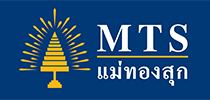



· Wall St. reaches new highs as China moves to limit coronavirus impact
The Dow Jones Industrial Average .DJI rose 88.92 points, or 0.3%, to 29,379.77, the S&P 500 .SPX gained 11.09 points, or 0.33%, to 3,345.78 and the Nasdaq Composite .IXIC added 63.47 points, or 0.67%, to9,572.15.
U.S. stocks gained for a fourth straight session on Thursday and Wall Street’s main indexes hit record highs as concerns eased over the economic fallout from the coronavirus outbreak in China.
China said it would halve additional tariffs levied against some U.S. goods, seen by analysts as a move to boost confidence after the fast-spreading coronavirus disrupted businesses and sparked broad market volatility.
Adding to the optimism for stocks were data showing that the number of Americans filing for unemployment benefits dropped to a nine-month low last week, with investors casting an eye toward Friday’s monthly U.S. employment report.
· China stocks soar almost 3% as Beijing says it will trim tariffs on some US goods
Stocks in Asia jumped on Thursday as investors in the region reacted to positive developments on the U.S.-China trade front.
Mainland Chinese stocks were among the biggest gainers of the day regionally following that announcement, with the Shenzhen composite surging 2.895% to end its trading day at approximately 1,727.24 while the Shenzhen component advanced 2.87% to close at 10,601.34. The Shanghai composite rose 1.72% to close at about 2,866.51.
Stocks in Japan also saw strong gains on the day, with the Nikkei 225 up 2.38% to 23,873.59 and the Topix index gaining 2.07% to 1,736.98. South Korea’s Kospi soared 2.88% to close at 2,227.94.
Meanwhile, Hong Kong’s Hang Seng index jumped 2.35%, as of its final hour of trading.
Elsewhere, Australia’s S&P/ASX 200 ended its trad
· Asian markets fall as investors await China’s trade data
Markets across Asia fell on Friday morning as investors awaited the release of China’s trade data for January on Friday.
Japan’s Nikkei 225 reversed gains to decline 0.35%, while the Topix was down 0.31%. Those shares had made strong gains on Thursday following news that China had cut retaliatory tariffs on some U.S. goods by half. Mainland Chinese shares also ended the day higher in the previous session.
Elsewhere, South Korea’s Kospi dropped 0.73%. Australia shares followed the trend, with the ASX 200 down 0.43%.
MSCI’s broadest index of Asia-Pacific shares outside Japan fell 0.35%.
Investors will be keeping an eye on China’s exports and imports data for January which are set to be released on Friday. The country’s dollar-denominated exports and imports for December had beat expectations. In December China’s trade surplus with the U.S. was $23.18 billion — down from $24.6 billion in November.
Despite coronavirus fears, a fast recovery is predicted for your 401(k) plan
Here’s a comforting fact as the market grapples with the coronavirus: Your 401(k) plan is pretty resilient.
The alarming spread of the respiratory illness that began in Wuhan, China, has already sickened over 28,000 people and killed more than 560 since Jan. 20. Companies are citing the virus in their earnings calls, and one economist, AdMacro Head of Research Patrick Perret-Green, said the outbreak risked a “Lehman-type moment.”
History shows that stocks typically snap back fairly quickly from disease outbreaks.

“On a forward-looking basis, dengue fever, swine flu, Ebola, measles, rubella, Zika, they don’t hurt the stock market that much,” said Dan Egan, managing director of behavioral finance and investing at Betterment.
In 2016, the Zika virus, linked to birth defects in the babies of mothers infected while pregnant, tore through Latin America, the Caribbean and the U.S. The global stock market shed 6% a month after Zika took off. But six months later? It was down just around 0.6%.
The deadly Ebola virus that broke out two years later dragged global stocks down more than 7%. Just half a year later, much of those losses rebounded.
Stocks were down 2% in the immediate wake of the 2010 cholera outbreak, which eventually sickened more than 6% of Haitians. Six months later, they were up more than 13%.
“They recovered all of those losses – and then some,” said Jeffrey Kleintop, chief global investment strategist at Charles Schwab. Kleintop compiled the research on how the market has responded to previous disease outbreaks.
Reference: CNBC, Reuters
